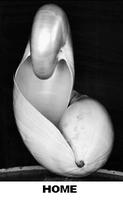Doing More with Less
Change our electric bulbs, our boilers and our refrigerators, insulate our houses, buy less polluting cars, use public transport: these are some of the things we should do if we want to protect the environment and guarantee a stable supply of energy for our children. The market alone will not enable us to make these energy savings. The prices of electricity or petrol, certainly expensive for part of the population, do not reflect the genuine cost of energy for our society and do not encourage consumers to make sufficient savings. Action by public authorities is therefore essential in order to influence our behaviour and to ensure that the most efficient technologies, that is those which make it possible to use less energy, are systematically used by industry.
The European Commission decided today to relaunch the initiative on saving energy by publishing a new Green Paper. This document analyses the situation and draws up a whole series of actions to be discussed, commented on and supplemented by all stakeholders. It is already clear that, at the end of this consultation, Europe will have to find a way to put an end to this waste of energy through measures and actions at all levels of society and in all sectors of the economy.
Why give priority to energy saving?
Today the European Union imports about 50% of its energy needs, which amounts to approximately 240 billion euros each year. If nothing is done, 70% of the EU energy needs could be covered by imports by 2030. Our dependence increases each day. With the development of transport, oil remains our main energy source while the price per barrel of crude takes off and the environment deteriorates. The European Union is also confronted by a significant growth of energy consumption while energy sources are becoming scarce. The EU has limited room for manoeuvre on the energy supply side. Renewable energy has not evolved enough to replace oil and gas in a sufficient quantity. Therefore the Commission had already proposed in November 2000, in its Green Paper "Towards a European strategy of energy supply", to act mainly on the energy demand side. Saving energy is indeed the most rapid, easiest and most effective way to answer the challenge of our energy dependence. And the potential for saving energy is considerable.
An average household can easily save an amount ranging between 200 and 1000 euros a year according to its consumption level. Energy consumption is also the main reason for the growth of greenhouse gas emissions and climate change.
- By saving 20% of energy consumption, it would be possible to secure 50% of the necessary reductions of CO2 emissions. European industry has already started to develop advanced technologies in the field of energy saving.
- Saving 20% of energy consumption would also strengthen the competitiveness of our economy and facilitate the creation of one million jobs in Europe.
A potential of 20% savings by 2020
It is possible to save up to 20% of our energy consumption (a saving of 60 billion euros a year).
- 10% savings could be carried out by fully implementing the measures already set out by Europe in the building, domestic appliances, heat production and transport sectors.
- To save the remaining 10%, new measures must be outlined using all possible levels of action.
What can I do?
Well, at a personal level, keep the data below in mind:
Type of Equipment: Old TV Set
Standby: 6 W
Type of Equipment Consumption: 43.6 kWh (20 hours per day in standby)
Annual Energy Cost: (€)5,6 €
Type of Equipment: New TV Set*
Standby: 2 W
Type of Equipment Consumption: 14.6 kWh
Annual Energy Cost:1,9 €
Type of Equipment: DVD
Standby: 2 W
Type of Equipment Consumption: 17.5 kWh
2,3 €
Type of Equipment: VCRs Old
Standby: 8 W
Type of Equipment Consumption: 70 kWh
Annual Energy Cost: 9,1 €
Type of Equipment: VCR New*
Standby: 3 W
Type of Equipment Consumption: 26 kWh
Annual Energy Cost: 3,4 €
Type of Equipment: Hi-Fi system
Standby: 3 W
Type of Equipment Consumption: 26 kWh
Annual Energy Cost: 3,4 €
Type of Equipment: Hi-Fi system new*
Standby: 1 W
Type of Equipment Consumption: 8.7 kWh
Annual Energy Cost: 1,14 €
Type of Equipment: ADSL modem
Standby: 2 W to 10 W
Type of Equipment Consumption: 73 kWh (20 hours in per day standby)
Annual Energy Cost: 9,5 €
Type of Equipment: Set Top Boxes
Standby: 5 W to 20 W
Type of Equipment Consumption: 146 kWh (20 hours in per day standby)
Annual Energy Cost: 19 €
Type of Equipment: PC (soft off-mode)
Standby: 1 W to 5W
Type of Equipment Consumption: 36.5 kWh (20 hours in per day standby)
Annual Energy Cost: 4,7 €
Type of Equipment: Printer (sleep mode)
Standby: 2 to 10 W
Type of Equipment Consumption: 87.6 kWh
Annual Energy Cost: 11,4 €
Type of Equipment: External Power Supply
Standby: 0.2 to 2 W
Type of Equipment Consumption: 17.5 kWh
Annual Energy Cost: 2,3 €
Type of Equipment: Microwave Oven
Standby: 2 W
Type of Equipment Consumption: 17.5 kWh
Annual Energy Cost: 2,3 €
Total (Worst case and with 5 external power supplies, one new and one old TV)
Standby: 81W
Type of Equipment Consumption: 646.8 KWh
Annual Energy Cost: 84 €
Data © European Communities, 2005






0 Comments:
Post a Comment
<< Home